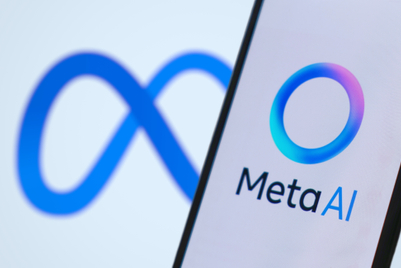
TAIWAN'S TOP 100 BRANDS
This year’s top 100 country list is mounting evidence that Taiwanese love anything Japanese. While Apple retains the top spot, four Japanese brands remain in the top 10 from last year: Sony, Hitachi, Panasonic, and Meiji.
This pattern is also apparent in the overall top 1000 with Kao upping four spots to 17, FamilyMart up six spots to 29, Sharp rising four spots to 35, and Muji climbing a dramatic 1,526 spots to 297.
“Overall, Taiwanese people think that anything Japanese relates to high quality,” says Jennifer Tang, CEO of Dentsu Aegis Taiwan. The Japanese ruled Taiwan till 1945 before the territory was under the control of China, and historically, the local Taiwanese have felt a deep trust towards Japanese brands – especially in the electronics and personal care categories.
Japanese convenience store chain FamilyMart, for instance, climbed six spots to 29, a result of rapid expansion at railway stations which could see it overtaking the dominance of 7/11. According to Oliver Tsai, chief strategy officer for Isobar Taiwan, FamilyMart has become a huge success story in Taiwan when the brand introduced a membership programme through its app.
This member economy meant that people could buy things in bulk for daily consumption such as coffee or ice cream. “You could also buy coffee and send it to friends. And it’s not just food, it’s all sort of life services. This app has a lot of loyal users and they get to accumulate points on the app,” says Tsai.
Tsai adds that there’s a sense that those who are pro-Japanese brands are also pro-Taiwan. And while the love for Japanese brands is reflective among all generations, it’s especially so among those who are older and more affluent.
Yes to Korea, no to China
Meanwhile, mainland Chinese brands are perceived as exactly the opposite – low-quality. This explains why there are no Chinese brands in the top 100.
The only exception here is Xiaomi which climbed 33 spots to 38th spot this year. This can be chalked down to a few factors including successful marketing as a value-for-money brand, flagship stores in high-traffic areas across Taiwan, and aggressive expansion of its cellphone offerings to other household electronics.
Generally, consumers in Taiwan are warming up to Korean brands more so than they are to mainland Chinese brands. LG, for instance, rose 23 spots this year to 23th spot; and Korean MNC conglomerate Lotte climbed 57 spots to 182.

“Korean brands have recently become much better. They're good at product design and promoting their brand, and this is why their brand perception has improved,” says Martin Lu, brand strategy director for DDG. “LG has been promoted by a famous local KOL, and it’s become very popular [in Taiwan].”
Younger consumers are also taking an interest in Korean skincare, cosmetics, fashion, and entertainment.
The undisputed champion in APAC, Samsung, climbed up two spots this year to 6th spot in Taiwan. But here, Samsung doesn’t carry the same invincibility as it does in many other markets regionally.
More headaches for Taiwanese people?
One of the big international brands that saw a big leap this year is Yahoo, which Lu attributes to its online shopping centre where individual sellers can hawk their goods, similar to the Shopee model.
“Yahoo launched a program where consumers can pay for their purchases without a credit card, and they can pay in several instalments. And they found data that the overall purchases for people who use these instalments are 7.5% more than average purchases,” he says.
Yahoo-Kimo Inc, Taiwan’s largest online auctioneer, is also thriving. According to a report, more than four million are up are for sale on the site, through which 95 percent of the nation's auction business is conducted.
Meanwhile, luxury brands remained largely unchanged with Chanel rising a spot to third overall. The biggest jump in this category, however, is Gucci which leaped 23 spots to 28th place. This can be attributed to a new art wall along Yong Kang Street which has significantly gained interest of locals and tourists.

Panadol too saw a big leap to 21st spot from 38th last year. According to Lu, people take 900 million painkiller pills every year and Panadol takes up 48% of the market share in the local painkiller market. This year, the brand raised its prices by 10% and news report circulated news, which ultimately lent Panadol wider brand reach.
But others had different ideas as to why Panadol was performing well. Tsai from Isobar said that headache relievers were on the up because of the uncertain political situation in the lead-up to the presidential elections next year.
One pro-China candidate, Han Kuo-Yu, has been dubbed the ‘Donald Trump of Taiwan’ and is driving anxiety among the younger pro-Taiwan demographic, Tsai says. “The press is not helping either, they are making this divide worse. Looks to me that the whole society is very anxious and the part that’s helping are headache relievers,” he says.
By that logic, the painkiller and opioid market in the US have surely skyrocketed in the past three years.




.jpg&h=334&w=500&q=100&v=20250320&c=1)





+(900+x+600+px)+(3).png&h=334&w=500&q=100&v=20250320&c=1)
.jpg&h=334&w=500&q=100&v=20250320&c=1)



.jpg&h=268&w=401&q=100&v=20250320&c=1)

.png&h=268&w=401&q=100&v=20250320&c=1)
.jpg&h=268&w=401&q=100&v=20250320&c=1)
.png&h=268&w=401&q=100&v=20250320&c=1)
